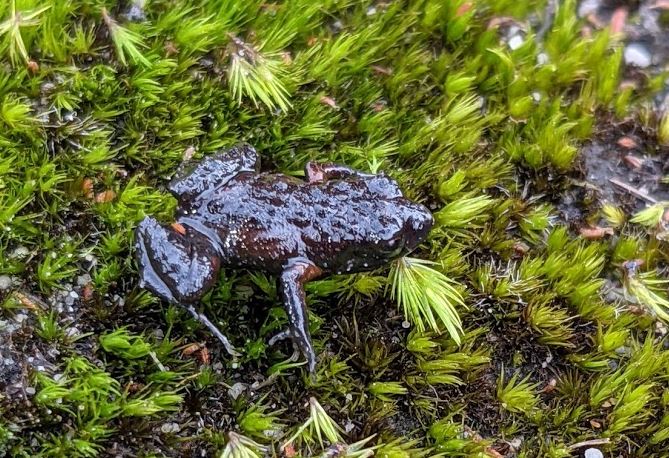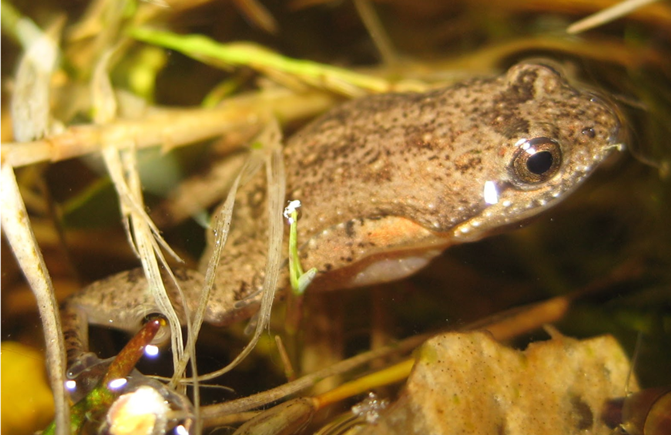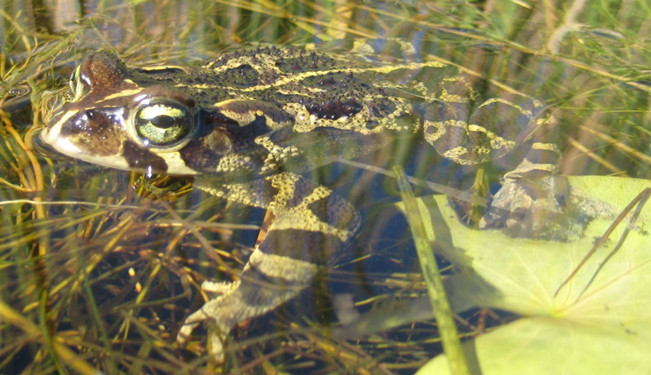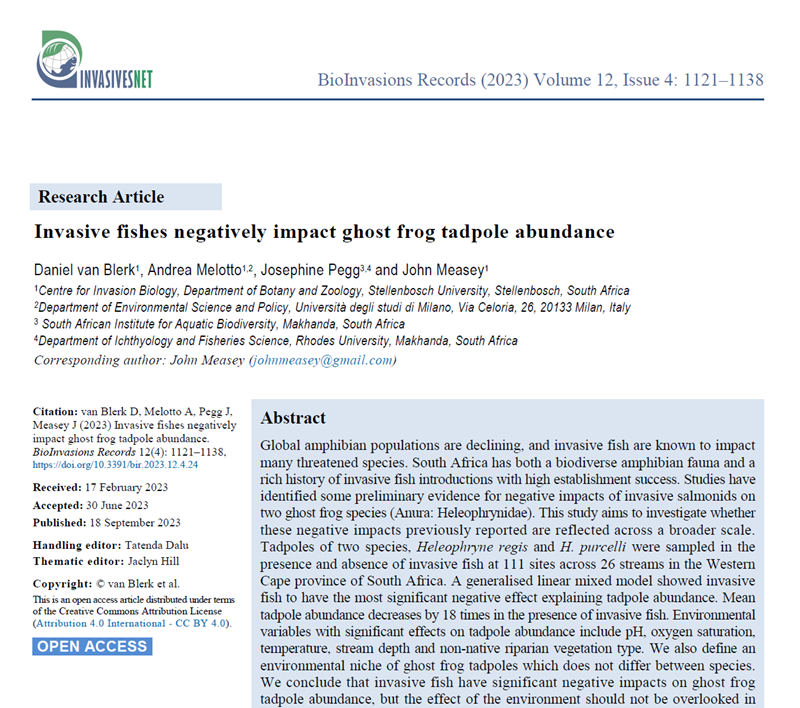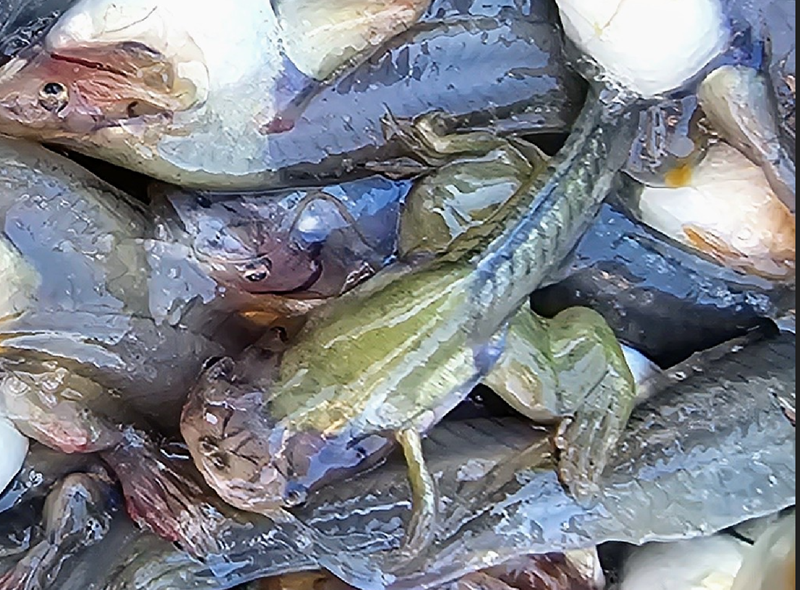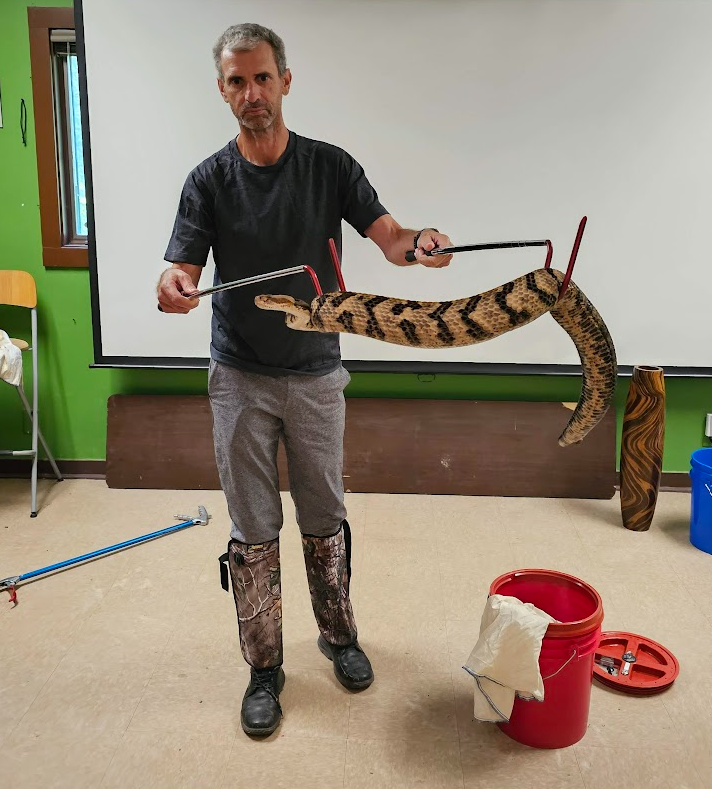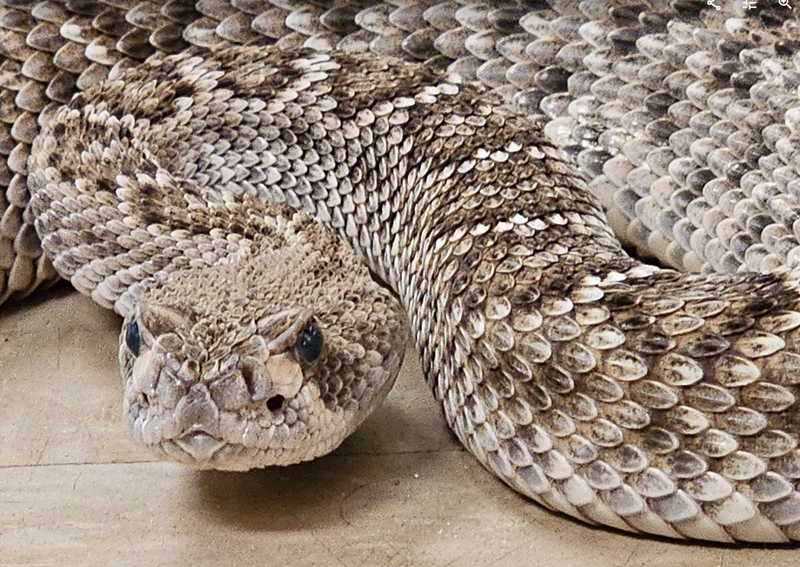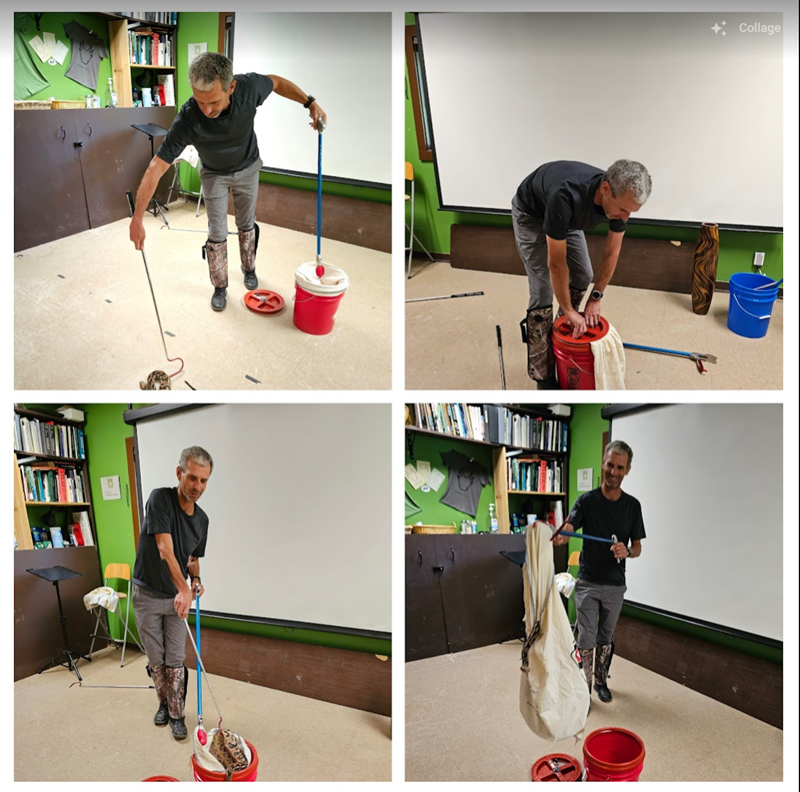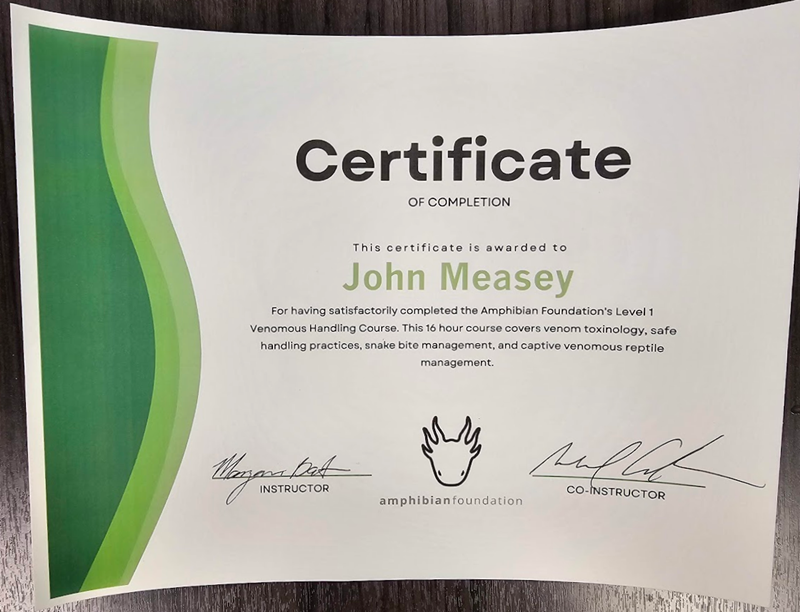Results from GAA2 suggest a continuing global amphibian decline
In 2004, the first IUCN global assessment of amphibians revealed that they are the most threatened vertebrates on the planet. Published today is the paper summarising the second global assessment of the conservation status of amphibians (GAA2). IUCN red list Assessments took place of 8011 species of amphibians from all continents (except Antarctica).
Readers of this blog will be familiar with the assessments that took place in southern Africa that were the subject of workshops in December 2009 andNovember 2015(which also resulted ina bookanda paperon the subsequent conservation strategy, see also blog postshere).
Sadly, the GAA2 still shows a continuing decline in the global conservation status of amphibians, with 41.0% of them falling into threatened categories of Vulnerable, Endangered or Critically Endangered. This is greater than the threatened categories for mammals (26.5%), reptiles (21.4%) and birds (12.9%).
While habitat destruction and change are still the greatest threat to the majority of threatened amphibians (impacting 93%), climate change and disease are now growing in their importance and impacting more species than in the first assessment. In particular, central and eastern Africa are new hotspots for disease, primarily implicating the chytrid fungus.
There is also good news suggesting that amphibians can benefit from concerted conservation efforts. These include dedicated conservation areas, removal of invasive species and reintroduction programmes.
If you want to read more about GAA2, then please look at the open access paper:
Luedtke, J.A. et al. (2023) Ongoing declines for the world’s amphibians in the face of emerging threats. Nature https://doi.org/10.1038/s41586-023-06578-4
Over the years, MeaseyLab members have worked on a large number of threatened amphibians in southern Africa (see Further Reading, below). Here are just a few of them:
Rough moss frog, Arthroleptella rugosa(Critically Endangered)
IUCN SSC Amphibian Specialist Group & South African Frog Re-assessment Group (SA-FRoG). 2016. Arthroleptella rugosa. The IUCN Red List of Threatened Species 2016: e.T174664A77162276. https://dx.doi.org/10.2305/IUCN.UK.2016-3.RLTS.T174664A77162276.en. Accessed on 04 October 2023.
The microfrog, Microbatrachella capensis(Critically Endangered)
IUCN SSC Amphibian Specialist Group & South African Frog Re-assessment Group (SA-FRoG). 2017.Microbatrachella capensis.The IUCN Red List of Threatened Species2017: e.T13318A77158116.https://dx.doi.org/10.2305/IUCN.UK.2017-2.RLTS.T13318A77158116.en. Accessed on 03 October 2023.

IUCN SSC Amphibian Specialist Group & South African Frog Re-assessment Group (SA-FRoG). 2017.Capensibufo rosei.The IUCN Red List of Threatened Species2017: e.T112716154A47759127.https://dx.doi.org/10.2305/IUCN.UK.2017-2.RLTS.T112716154A47759127.en. Accessed on 03 October 2023.
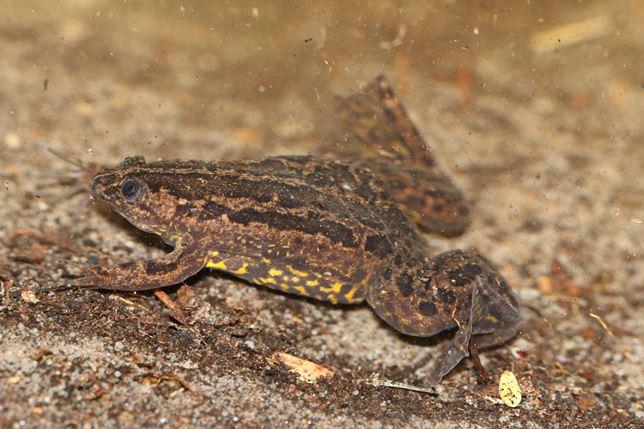
Cape clawed frog, Xenopus gilli(Endangered)
IUCN SSC Amphibian Specialist Group & South African Frog Re-assessment Group (SA-FRoG). 2017.Xenopus gilli.The IUCN Red List of Threatened Species2017: e.T23124A77164368.https://dx.doi.org/10.2305/IUCN.UK.2017-2.RLTS.T23124A77164368.en. Accessed on 03 October 2023.
Western leopard toad, Sclerophrys pantherinus(Endangered)
IUCN SSC Amphibian Specialist Group & South African Frog Re-assessment Group (SA-FRoG). 2016.Sclerophrys pantherina.The IUCN Red List of Threatened Species2016: e.T54723A77159333.https://dx.doi.org/10.2305/IUCN.UK.2016-3.RLTS.T54723A77159333.en. Accessed on 03 October 2023.
Further Reading:
Angus, O., Turner, A.A. & Measey, J. (2023) In a Rough Spot: Declines in Arthroleptella rugosa calling densities are explained by invasive pine trees. Austral Ecology48(3): 498-512. https://doi.org/10.1111/aec.13273
Channing, A., Measey, G.J., De Villiers, A.L., Turner, A.A. & Tolley, K.A. (2017) Taxonomy of the Capensibufo rosei group (Anura: Bufonidae) from South Africa. Zootaxa 4232(2): 282–292 https://doi.org/10.11646/zootaxa.4232.2.11 pdf
de Villiers, F.A., de Kock, M. & de Measey, G.J. (2016) Controlling the African clawed frog Xenopus laevis to conserve the Cape platanna Xenopus gilli in South Africa. Conservation Evidence 13, 17. pdf
Edwards, S, Tolley, KA & Measey, GJ (2017) Habitat characteristics influence the breeding of Rose's dwarf mountain toadlet Capensibufo rosei (Anura: Bufonidae) Herpetological Journal27: 287-298. pdf
Furman, B., Cauret, C., Colby, G., Measey, J. & Evans, B.J. (2017) Limited genomic consequences of hybridization between two African clawed frogs, Xenopus gilli and X. laevis (Anura: Pipidae). Scientific Reports 7(1):1091 https://doi.org/10.1038/s41598-017-01104-9 pdf
Luedtke, J.A., Chanson, J., Neam, K., Hobin, L., Maciel, A.O., Catenazzi, A., Borzée, A., Hamidy, A., Aowphol, A., Jean, A., Sosa-Bartuano, Á., Fong G., A., de Silva, A., Fouquet, A., Angulo, A., Kidov, A.A., Muñoz Saravia, A., Diesmos, A.C., Tominaga, A., Shrestha, B., Gratwicke, B., Tjaturadi, B., Martínez Rivera, C.C., Vásquez Almazán, C.R., Señaris, C., Chandramouli, S.R., Strüssmann, C., Cortez Fernández, C.F., Azat, C., Hoskin, C.J., Hilton-Taylor, C., Whyte, D.L., Gower, D.J., Olson, D.H., Cisneros-Heredia, D.F., Santana, D.J., Nagombi, E., Najafi-Majd, E., Quah, E.S.H., Bolaños, F., Xie, F., Brusquetti, F., Álvarez, F.S., Andreone, F., Glaw, F., Castañeda, F.E., Kraus, F., Parra-Olea, G., Chaves, G., Medina-Rangel, G.F., González-Durán, G., Ortega-Andrade, H.M., Machado, I.F., Das, I., Dias, I.R., Urbina-Cardona, J.N., Crnobrnja-Isailović, J., Yang, J.-H., Jianping, J., Wangyal, J.T., Rowley, J.J.L., Measey, J., Vasudevan, K., Chan, K.O., Gururaja, K.V., Ovaska, K., Warr, L.C., Canseco-Márquez, L., Toledo, L.F., Díaz, L.M., Khan, M.M.H., Meegaskumbura, M., Acevedo, M.E., Napoli, M.F., Ponce, M.A., Vaira, M., Lampo, M., Yánez-Muñoz, M.H., Scherz, M.D., Rödel, M.-O., Matsui, M., Fildor, M., Kusrini, M.D., Ahmed, M.F., Rais, M., Kouamé, N.G., García, N., Gonwouo, N.L., Burrowes, P.A., Imbun, P.Y., Wagner, P., Kok, P.J.R., Joglar, R.L., Auguste, R.J., Brandão, R.A., Ibáñez, R., von May, R., Hedges, S.B., Biju, S.D., Ganesh, S.R., Wren, S., Das, S., Flechas, S.V., Ashpole, S.L., Robleto-Hernández, S.J., Loader, S.P., Incháustegui, S.J., Garg, S., Phimmachak, S., Richards, S.J., Slimani, T., Osborne-Naikatini, T., Abreu-Jardim, T.P.F., Condez, T.H., De Carvalho, T.R., Cutajar, T.P., Pierson, T.W., Nguyen, T.Q., Kaya, U., Yuan, Z., Long, B., Langhammer, P., Stuart, S.N., 2023. Ongoing declines for the world’s amphibians in the face of emerging threats. Nature 1–7. https://doi.org/10.1038/s41586-023-06578-4
Measey, G.J. (ed.) (2011). Ensuring a Future for South Africa's Frogs: A Strategy for Conservation Research. Biodiversity Series 19. South African National Biodiversity Institute, Pretoria. pdf
Measey, J., Tarrant, J., Rebelo, A.D., Turner, A.A., Du Preez, L.H., Mokhatla, M.M., Conradie, W. (2019) Has strategic planning made a difference to amphibianconservation research in South Africa? African Biodiversity & Conservation - Bothalia 49(1), a2428. https://doi.org/10.4102/abc.v49i1.2428 pdf
Measey, J., Becker, F. & Tolley, K.A. (2021) After the fire: assessing the microhabitat of Capensibufo rosei (Hewitt, 1926). Herpetology Notes14: 169-175. pdf
Tolley, K.A., De Villiers, A.L., Cherry, M.I., & Measey, G.J. 2010. Isolation and high genetic diversity in dwarf mountain toads (Capensibufo) from South Africa. Biological Journal of the Linnean Society 100, 822-834. https://doi.org/10.1111/j.1095-8312.2010.01469.x pdf
Vogt, S., de Villiers, F.A., Ihlow, F., Rödder, D. & Measey, J. (2017) Competition and feeding ecology in two sympatric Xenopus species (Anura: Pipidae). PeerJ5:e3130; DOI 10.7717/peerj.3130 pdf
